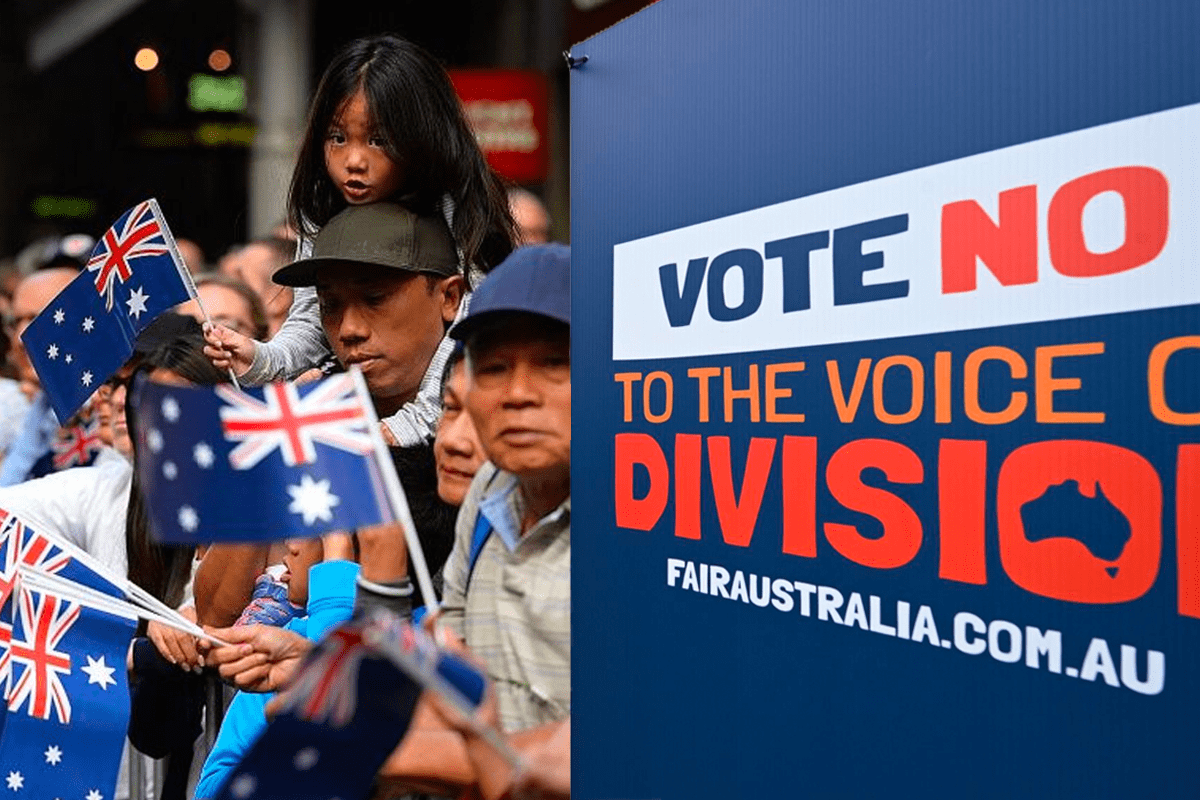Immigrant communities are regularly overlooked in political campaigning and susceptible to political manipulation. The referendum on the Indigenous Voice to Parliament showcased how these communities were deliberately targeted with disinformation from the No campaign, or found information on the referendum inaccessible.
Inaccessibility is a large problem, as households from non-English speaking backgrounds often struggle with political literacy, as the majority of information provided is in English. Asylum Seeker Resource Centre CEO, Kon Karapanagiotidis, has stated that the Australian government should have been “better prepared to engage multicultural communities on the ground” during the referendum, noting a missed opportunity to provide resources in a variety of languages earlier. Additionally, information provided can be complex and explained in political jargon, making it difficult to reach communities that are often also low SES and lack access to education. Social and political contexts within immigrant countries of origin also contribute to the issue: those who were second-class citizens before immigration, or experienced political unrest, often distrust authority and fear changes to the status quo — and must be informed in a manner which understands this context.
Western Sydney, one of the most multicultural areas in Australia consisting of a high immigrant population, had 10 federal electorates that voted No.
Some of this can be attributed to the inaccessibility of the Yes campaign, which has been criticised for its inability to communicate its issues to cultural demographics outside the inner city. Voters in these communities reiterated that they were confused about the lack of specific detail in the Voice clause — a purposeful element as it is a Constitutional amendment and necessarily must be generalised — and were not given adequate or clear answers to the questions devoid of legal jargon or assertions. Additionally, voters were often sceptical of authority figures in general — due to aforementioned social and political contexts — and did not understand the campaigns broad references to academics and scholars who wrote and proposed the Voice, as opposed to the (albeit carefully calculated) “guy next door” persona of No campaigner and political strategist Warren Mundine. Kos Samaras, RedBridge Group Australia researcher, thinks the Yes campaign failed to connect with voters in these areas, asserting that “The method of communication had to be different to outer suburban communities. That was not because they are not intelligent but are culturally different.”
However, The No campaign against the Voice has used rhetoric specifically targeting unique fears in the immigrant community, especially in Western Sydney, in order to spread disinformation about the capacity and intentions of the Voice. Disinformation in general is sinister, but especially so when it targets those who are financially insecure, have to surpass structural barriers simply to make ends meet, and deeply fear losing their newfound stability in Australia. Additionally, immigrant communities — specifically East and South Asians — fall victim to the ‘Model Minority Myth’, which creates a false dichotomy between ‘model’ minorities and other minorities, ultimately dividing immigrants based on how proximate and conducive they are to upholding whiteness. This was leveraged specifically against immigrants through rhetoric from the No campaign about ‘division’ and ‘undeserved special rights’, creating yet another false dichotomy: ‘hardworking, satisfied immigrants’ vs ‘lazy Indigenous people who want special rights’.
The Federation of Ethnic Communities Councils of Australia (FECCA) has accused the No campaign of creating a “distracting narrative” around the Voice. This is specifically notable when confronting disinformation about reparations and Land Back. Land Back, according to Firsts Nations not-for-profit Common Ground, is about “reckoning with so-called Australia’s history…protecting sacred sites and cultural heritage”. The concept of Land Back has been willfully misconstrued as forcing people to give their physical land back to Indigenous people, or forcing people to pay extra taxes as ‘reparations’, creating a scare campaign which has spooked financially insecure migrant communities – especially in the midst of a cost of living crisis. This disinformation is particularly pernicious as it has pervaded not only Western Sydney, but immigrant communities all over Australia. Maninder Kaur, a student at the University of Sydney, has testified that throughout the Indian immigrant farming community in Far North Queensland, disinformation about having to give back farmland and participate in a ‘UN scheme’ has been running absolutely rampant.
President of FECCA, Mr Carli, has also said that No campaign messaging has targeted immigrant communities and “fronted about their own sense of being Australian”, focussing on leveraging immigrants’ sense of insecurity regarding security and citizenship status. Peter Dutton himself has claimed that the voice will “re-racialise our country”, a claim which resonated particularly strongly in communities from countries with strong ethnic tensions like Sri Lanka, Sudan, and Myanmar. Even the Australian Electoral Commission booklet itself stipulated that the Voice “creates different classes of citizenship”, fuelling fears within these specific communities that they may return to the same dire situation of second-class citizenship status if Indigenous people were given “special rights”.
Immigrant communities have uniquely pervasive fears about financial insecurity, dispossession, and authority figures. The failure to make information legitimately accessible, alongside the No campaigns specific targeting of these fears in order to propagate disinformation, is a disgrace to both honesty and democracy.





